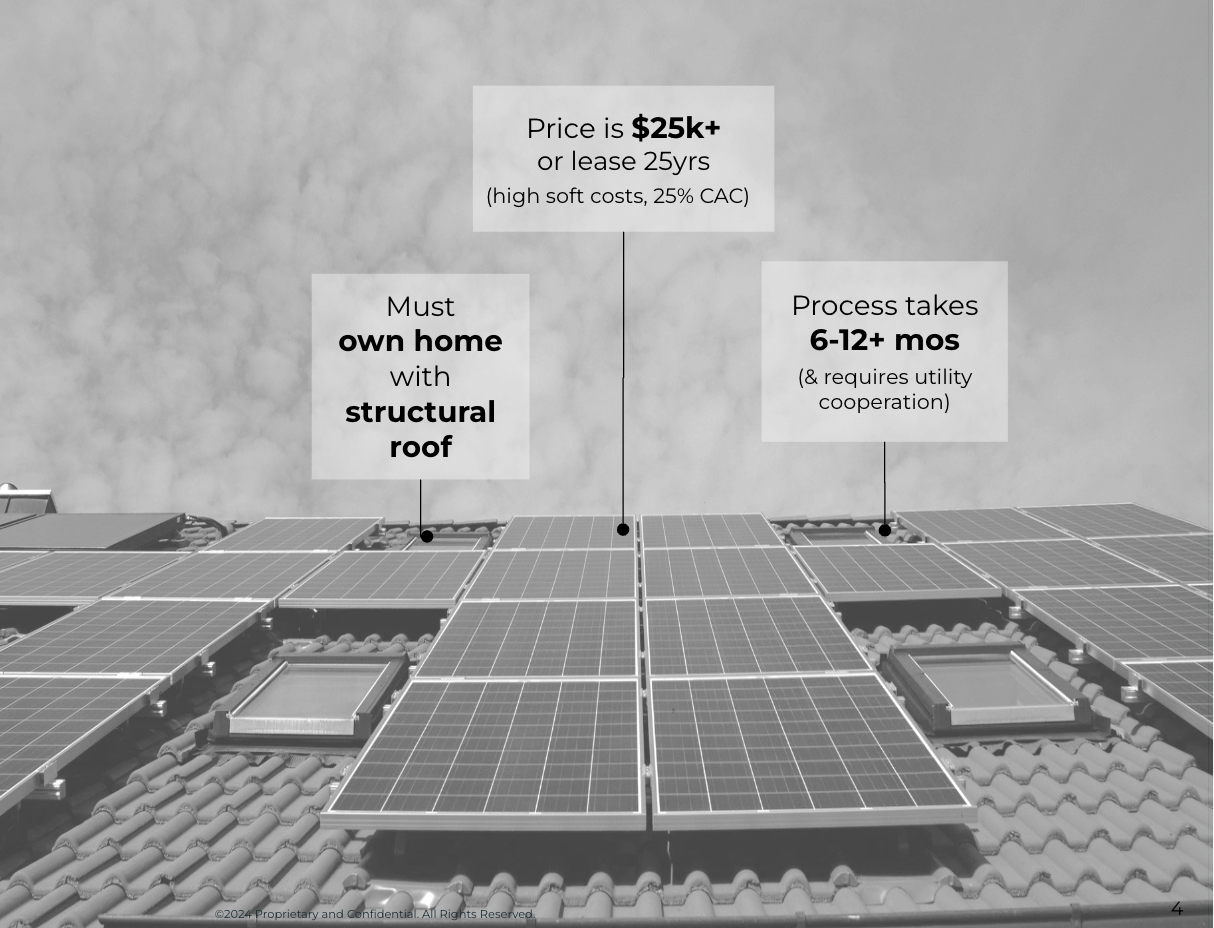"Today with residential solar we are trying to sell an expensive construction project to people who don't think that much about their electricity bill in the first place. We've saturated the early adopters and the current business models don't work for those who really have the financial and resilience pain points." - Wood (CEO, Raya Power)
Despite the promise of clean, affordable energy, residential solar remains out of reach for most Americans. Low-to-moderate income (LMI) communities, in particular, struggle with limited access to reliable energy solutions that could alleviate the financial burden of rising utility bills and provide resilience during extreme weather events.
The reality is stark:
- 30% of Americans skip basic expenses to pay an energy bill (here).
- Households avoid using air conditioners due to high costs, a decision that can be fatal (here).
- Puerto Rico experiences over 10x the industry standard for utility outages (here).
- Backup power is increasingly important, but out of reach for many (here).
Over the past 1.5 years, we’ve spoken with over 200 experts, community-based partners, and LMI households to understand the barriers to distributed solar and storage. Conversations with organizations like Fresno State, Grid Alternatives, Climate Resilient Communities, Solar United Neighbors, and Posigen underscored that these challenges are urgent and multifaceted. The barriers extend beyond financing, stemming from inadequate solutions that fail to meet the needs of underserved households.
Why Don’t More Homes Have Solar?
The Flaws in Traditional Residential Solar
Although residential solar has grown in popularity, it’s still inaccessible to most households. Only ~3% of the 145 million homes in the U.S. have solar, and here’s why:
- Homeownership Requirement: Solar systems often require a permanent roof on a home you own, and many LMI households rent or lack the structural integrity needed for installation.
- High Costs: With an average price tag exceeding $25,000, traditional systems demand a significant upfront investment or a 25-year lease commitment. Even with incentives, payback periods stretch beyond nine years.
- Long Installation Timelines: Designing, permitting, and installing a solar system can take six months or more, delaying access to benefits.
- Skilled Labor Shortages: A lack of electricians and installers further slows down the process.
- High Customer Acquisition Costs: Companies spend over $5,000 per customer in acquisition costs, driving up prices and making only large systems economically viable.
Even when organizations like Grid Alternatives provide free solar systems, many LMI households can’t take advantage of them because they rent or lack a stable roof structure.
Why Now Is the Time for Change
The barriers are significant, but so are the opportunities. Here’s why this moment is critical for advancing solar access:
- Utility Rates Are Rising: With energy costs climbing, more households are looking for alternatives.
- Extreme Weather Is Getting Worse: Events like hurricanes and heatwaves highlight the urgent need for resilient energy solutions.
- Consumer Awareness Is High: Many people are familiar with solar but believe they lack viable options.
- Hardware Costs Are Dropping: Smaller systems are now more economical, provided soft costs like customer acquisition can be reduced.
- Government Support: Programs like Solar for All offer a unique opportunity to scale solar for LMI households.
Bridging the Gap
The existing landscape of residential solar is not designed for renters, low-income households, or those needing affordable, easy-to-deploy solutions. These communities need systems that:
- Are renter-friendly.
- Provide meaningful bill savings and resilience.
- Eliminate the need for complex installation or high upfront costs.
It’s time to reimagine solar as more than a construction project for homeowners. By addressing the urgent barriers faced by LMI communities and leveraging dropping hardware costs, innovative designs, and community support, we can bring clean, reliable, and affordable energy to those who need it most.
Let’s work to make solar simple, inclusive, and impactful for all.
